 As the number of digital TV-enabled households continues to rise and the analogue switch off looms ever closer, it seems strange that Sony’s RDR-GXD500 is the first DVD recorder to come equipped with a built-in digital TV tuner.
As the number of digital TV-enabled households continues to rise and the analogue switch off looms ever closer, it seems strange that Sony’s RDR-GXD500 is the first DVD recorder to come equipped with a built-in digital TV tuner.
Over 60% of UK households can now receive digital TV, but trying to record the content can involve nightmarish battles with endless cables and component boxes.
Sony’s RDR-GXD500 is a one-stop solution that’s easy to set up and use, with its all-in-one functionality letting users view Freeview digital channels, make digital recordings and play discs all from a single compact unit.
The included ‘learning’ multi-function remote control lets you jettison your TV remote too, leaving one less thing to have to find on a drunken Saturday night.
Setting up the recorder is a breeze: plug it into your telly, turn it on and then let it automatically scan for channels.
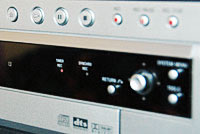 The unit’s onscreen interface is simplicity itself, with the eight-day electronic programme guide (EPG) banishing those video timer nightmares forever – this puppy is so simple, even a granny overdosed on Christmas sherry would have no problem setting up a recording of Des and Mel.
The unit’s onscreen interface is simplicity itself, with the eight-day electronic programme guide (EPG) banishing those video timer nightmares forever – this puppy is so simple, even a granny overdosed on Christmas sherry would have no problem setting up a recording of Des and Mel.
Selecting programs to record is as simple as clicking on the programme you wish to record from the EPG and that’s it. Easy!
Things look pretty good under the hood too, with the unit sporting high quality components such as a 12-bit/108Mhz DAC and both digital and analogue tuners, allowing you to record one channel while you watch another.
Conveniently, the RDR-GXD500 offers simultaneous record/playback and chase play (this lets you begin watching a recorded programme before it’s finished) as well as a veritable armoury of advanced editing, archiving and organising functions.
In use, the Sony performed flawlessly. Memories of long hours endlessly fast forwarding and rewinding video tapes looking for a programme, were banished forever thanks to the recorder’s indexing and multi speed search facilities.
The digital reception was crisp and sharp and infinitely superior to the vintage On Digital box lurking downstairs. Images were rock solid, the black is Bible black, and the colours are vibrant and richly balanced.
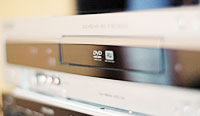 A range of recording quality modes let you increase recording time at the expense of image quality.
A range of recording quality modes let you increase recording time at the expense of image quality.
The highest setting (HQ) produced copies that were indistinguishable from the original broadcast, although this brought the recording time down to a just over two hours.
With the lowest quality mode, SLP (super long play) time-rich viewers could squeeze in up to six hours of recording with that old school ‘snow storm’ dodgy video feel.
DVD playback was pretty damn good on the machine, with a stable image output providing very little in the way of ‘smearing’ and digital artifacts.
Overall, the Sony RDR-GXD500 gave a consistently good account of itself in all areas, and as such, this is a DVD recorder I can wholeheartedly recommend.
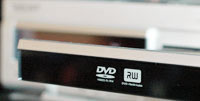 Highly recommended
Highly recommended
![]()
![]()
Pros: Great all round performance, integrated digital tuner and simple Cons: The baffling lack of progressive scan video capability
Specifications:
Size (WxHxD): 49x9x38cm
Weight: 5.1kg
Recording formats: DVD-R/-RW, DVD+R/+RW
Playback formats: DVD, DVD-R/-RW, DVD+R/+RW, CD, CD-R/-RW, VCD
Video outputs: Component, SCART (RGB), S-Video, composite, RF
Audio outputs: Line out, optical digital, coaxial digital
Street price: Under £400 (~US$762 ~€591)
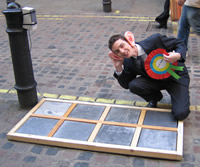 Living Streets, a national charity, launched its election campaign, “Talk to me about streets”, by making street items like paving and signs talk back to passers-by in Meard Street, Soho, London.
Living Streets, a national charity, launched its election campaign, “Talk to me about streets”, by making street items like paving and signs talk back to passers-by in Meard Street, Soho, London. Paving ‘squealed’ underfoot to point out the dangers of tripping over broken paving while spooky whispering windows resonated with the sound of absent children, no longer able to play in our dangerous streets.
Paving ‘squealed’ underfoot to point out the dangers of tripping over broken paving while spooky whispering windows resonated with the sound of absent children, no longer able to play in our dangerous streets.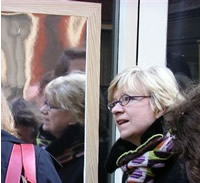 Living Streets Director Tom Franklin explains, “The streets are the one public service that everyone uses. Politicians can directly improve people’s daily lives by improving the street environment.”
Living Streets Director Tom Franklin explains, “The streets are the one public service that everyone uses. Politicians can directly improve people’s daily lives by improving the street environment.”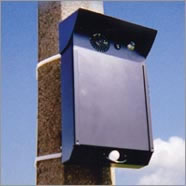 Verity Parker, who is doing an PhD at Brunel investigating electrical conductive fabrics, worked with Stock Displays to produce talking street signs, labelled in standard UK form, but with short audio samples.
Verity Parker, who is doing an PhD at Brunel investigating electrical conductive fabrics, worked with Stock Displays to produce talking street signs, labelled in standard UK form, but with short audio samples.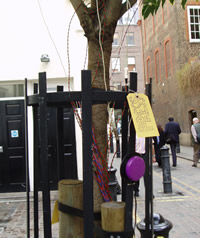 ‘The street that talks’ has the support of the Royal National Institute of the Blind, (RNIB) which also campaigns for streets and the built environment to be more accessible to blind and partially sighted people.
‘The street that talks’ has the support of the Royal National Institute of the Blind, (RNIB) which also campaigns for streets and the built environment to be more accessible to blind and partially sighted people.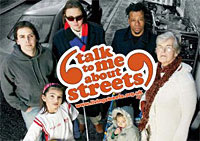 An accompanying new Living Streets’ pamphlet – written by two of Britain’s most eminent architects, Lord Richard Rogers and Sir Terry Farrell – was also unveiled at the event.
An accompanying new Living Streets’ pamphlet – written by two of Britain’s most eminent architects, Lord Richard Rogers and Sir Terry Farrell – was also unveiled at the event. In a shocking example of virtual life crashing into real life, a Shanghai online game player stabbed his gaming pal in the chest multiple times after he learned that he had stolen approximately US$870 (£462/€671) from the sale of a powerful “dragon sabre”, jointly owned by both players.
In a shocking example of virtual life crashing into real life, a Shanghai online game player stabbed his gaming pal in the chest multiple times after he learned that he had stolen approximately US$870 (£462/€671) from the sale of a powerful “dragon sabre”, jointly owned by both players.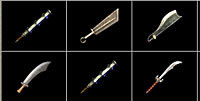 Still fuming, Chengwei popped around to have a word with Caoyuan who didn’t convince with his promises to pay him for the sword.
Still fuming, Chengwei popped around to have a word with Caoyuan who didn’t convince with his promises to pay him for the sword. However, online game companies in Shanghai – the city with the most players – are planning to set up a dispute system where aggrieved players can find recourse.
However, online game companies in Shanghai – the city with the most players – are planning to set up a dispute system where aggrieved players can find recourse.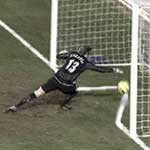 The International Football Association Board has agreed to trial microchip technology, which can determine whether a ball has crossed the goal line.
The International Football Association Board has agreed to trial microchip technology, which can determine whether a ball has crossed the goal line.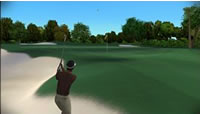 Today Electronic Arts (EA) used CES to announce its line-up for the US launch of Sony’s handheld entertainment system, the PSP due in March.
Today Electronic Arts (EA) used CES to announce its line-up for the US launch of Sony’s handheld entertainment system, the PSP due in March.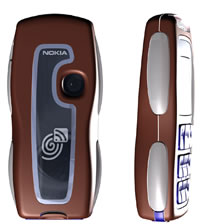 Nokia has lifted the lid on the world’s first NFC (Near Field Communication) equipped mobile phone by adding the special NFC clip-on shell to their 3220, a tri-band camera phone that is available in two versions (Euro/Asia & America). With its build-in NFC shell, the phone is the latest step in the development of innovative products for mobile communications.
Nokia has lifted the lid on the world’s first NFC (Near Field Communication) equipped mobile phone by adding the special NFC clip-on shell to their 3220, a tri-band camera phone that is available in two versions (Euro/Asia & America). With its build-in NFC shell, the phone is the latest step in the development of innovative products for mobile communications.